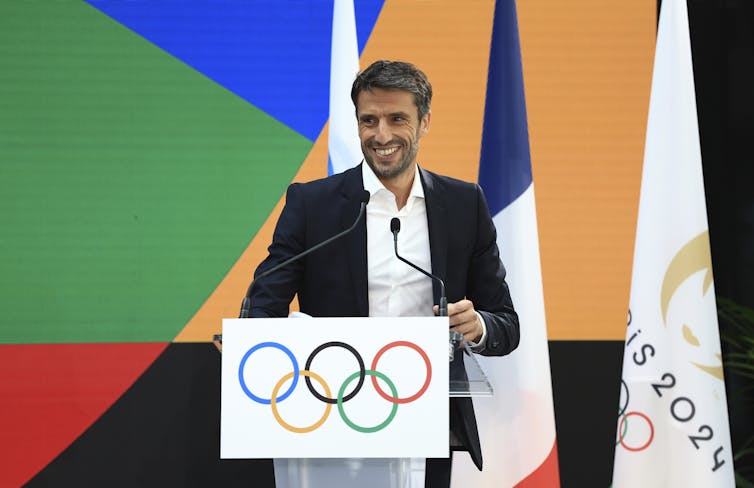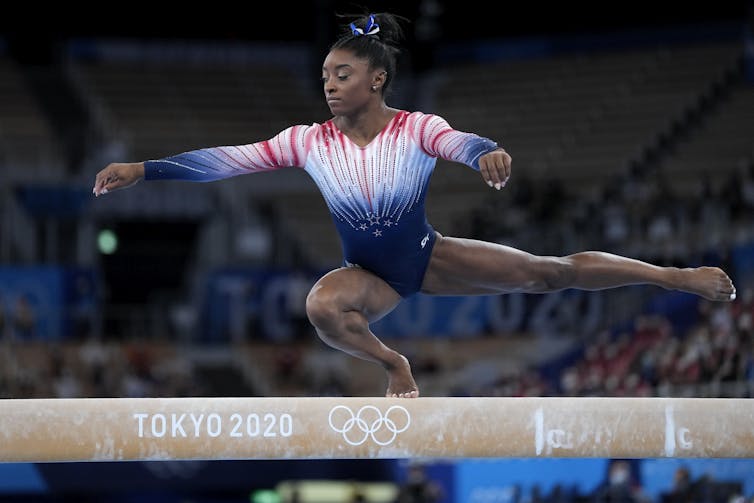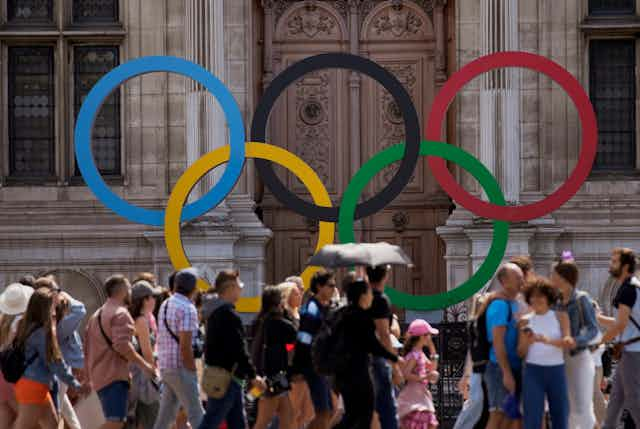With one year to go until the Paris 2024 Summer Olympic Games, fans around the world have been following their teams’ performances at the FIFA Women’s World Cup.
For fans whose national teams didn’t advance as much as they had hoped, they can look forward to seeing those same teams play at the Paris Olympics.
But the same is not true for the men’s national teams that competed at the 2022 FIFA World Cup in Qatar. At the Olympic Games, men’s national teams are limited to 23-year-old and younger players, with three exceptions for overage players. There are no age restrictions for the women players.
This is only one of the many gender-based differences in how men and women athletes compete at the Olympic Games.
Olympic Games sport programme
My research examines how the International Olympic Committee (IOC) has promoted gender equality at the Games. My book Gender Equality and the Olympic Programme focuses on the sport programme — all the sports and events included at the Games — because it is the most visible aspect of the Olympic Games.
“the Olympic programme is the fundamental core of the Olympic Games as decisions regarding the programme have an impact on virtually all other areas of the Olympic Games and Olympic Movement.”
The inclusion of specific sports and events, as well as how women and men athletes play those sports (and what they wear to play them), sends important messages about how the IOC and other international sport federations define and attempt to achieve gender equality.
In addition, the sport programme is highly contested. International sport federations, athletes, Games Organizing Committees, broadcasters and the IOC all have interests in its composition. And, sometimes, those interests conflict.
IOC’s quest for gender equality
Most of the IOC’s claims about gender equality achievements at the Games are focused on the sport programme. The IOC has announced that at the 2024 Games, for the first time, there will be an equal number of men and women athletes, and the same number of events (opportunities to win a medal) for men and women.
In 2014, the IOC released a strategic plan for the future of the Olympic Games. Among the 40 recommendations is one about fostering gender equality. Including an equal number of men and women athletes at the Games is one strategy the IOC identified to “foster gender equality.”

Claims about achieving “gender balance” have been an integral part of all the IOC’s statements about Paris 2024. It is crucial to critically examine what these claims mean and how they relate to achieving gender equality.
Ensuring gender parity — the same number of men and women athletes and men’s and women’s events — is important for gender equality at the Games, but it does not address the conditions of men’s and women’s participation.
Gender differences in sporting events
The IOC’s aim to achieve gender balance reveals an incomplete, numbers-focused commitment to gender equality.
When men and women compete in the same sports, international federations continue to enforce differences between men’s and women’s events. These differences include: the length of races; weight categories; the height, weight, size and spacing of equipment; the size of venues; and differences in judging, rules and uniforms.
For example, in artistic gymnastics, the differences between the men’s and women’s competitions include age requirements (18 years old for men and 16 for women); different apparatus (e.g., parallel bars for men and uneven parallel bars for women); the number of apparatus (six for men and four for women); and uniform requirements (long or short pants for men, leotards or unitards for women).
On the floor and vault — apparatus on which both men and women compete — women’s floor routines are set to music and include dance elements, while the men’s do not. When performing the same skills, men’s eligible scores are lower than women’s.

What the audience sees is women’s gymnastics performed in ways that emphasize stereotypical femininity and minimize strength and power. In contrast, men’s gymnastics events are organized to emphasize the athletes’ strength and power.
These gender-based differences are examples of gender inequality.
Complete gender equality
In cases where sports are gender-differentiated, women’s sports are designed to be a lesser version than the men’s. Women’s races are shorter, there are fewer weight categories, equipment and venues are lighter and smaller and women wear more revealing uniforms.
Differences in men’s and women’s conditions of participation are the result of decisions made by those who control Olympic sports — decision-makers who continue to be predominantly men. The differences are not naturally occurring, nor are they universal.
In fact, there are several sports and events on the Olympic programme that are not gender-differentiated. For example, men and women athletes competing in archery and badminton use the same venue, equipment and rules.
This is evidence of internal contradictions in the Olympic programme; some events are constructed to be different for men and women athletes, while others are not. This reinforces the need to identify and explain the remaining examples of gender-based differences.
These internal contradictions also require further attention from the IOC and the adoption of a more complete definition of gender equality — one that includes opportunity and status.
The IOC needs to look beyond the numbers and work with international federations to address athletes’ conditions of participation in the same sports.
Crucially, embracing and enforcing gender equality should not mean using men’s sports as the standard (e.g., increasing the length of women’s races to be the same as the men’s distance). Rather, this is an opportunity for international federations to determine the best possible conditions for all athletes in their sports.


